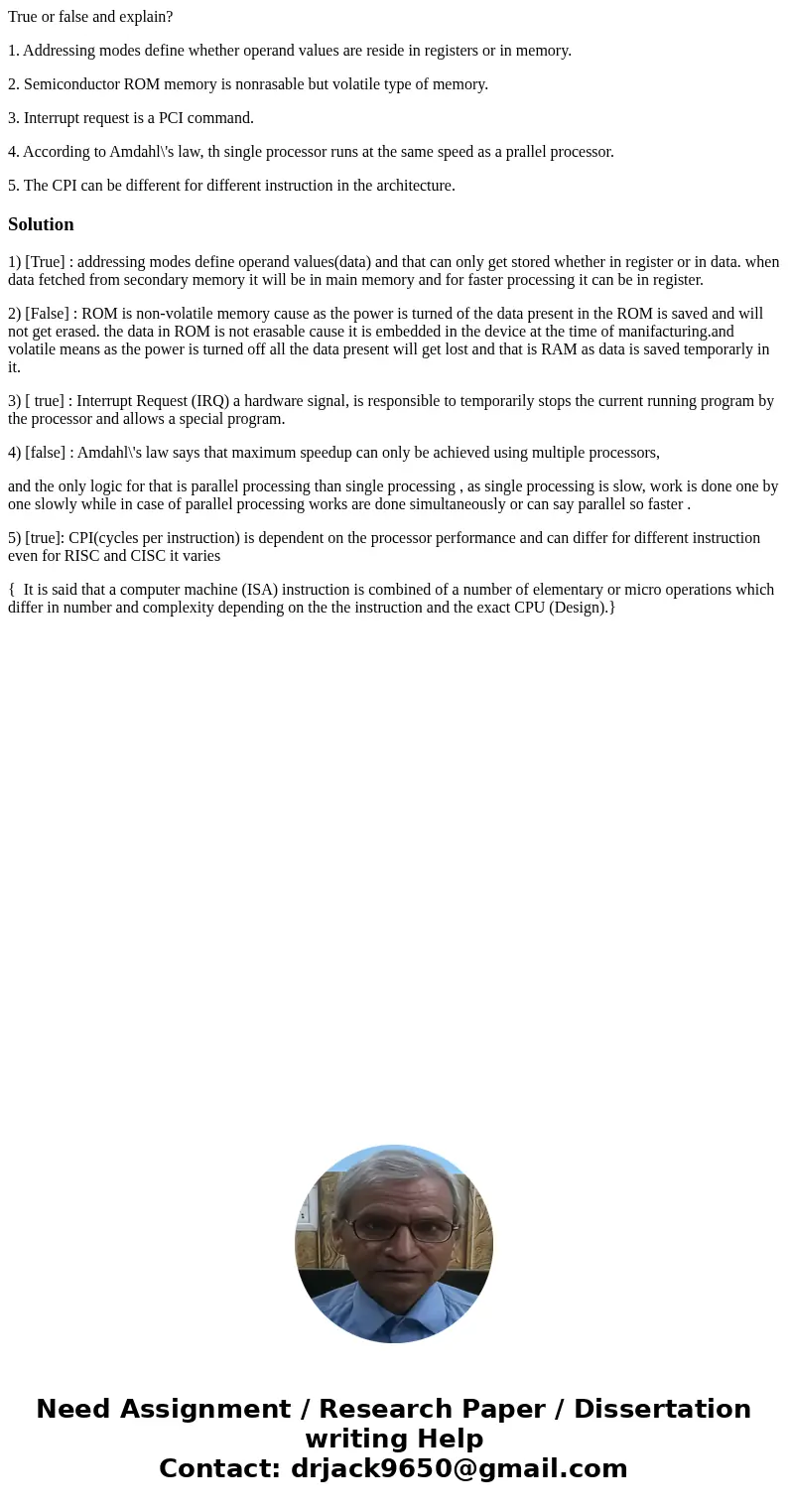True or false and explain 1 Addressing modes define whether
True or false and explain?
1. Addressing modes define whether operand values are reside in registers or in memory.
2. Semiconductor ROM memory is nonrasable but volatile type of memory.
3. Interrupt request is a PCI command.
4. According to Amdahl\'s law, th single processor runs at the same speed as a prallel processor.
5. The CPI can be different for different instruction in the architecture.
Solution
1) [True] : addressing modes define operand values(data) and that can only get stored whether in register or in data. when data fetched from secondary memory it will be in main memory and for faster processing it can be in register.
2) [False] : ROM is non-volatile memory cause as the power is turned of the data present in the ROM is saved and will not get erased. the data in ROM is not erasable cause it is embedded in the device at the time of manifacturing.and volatile means as the power is turned off all the data present will get lost and that is RAM as data is saved temporarly in it.
3) [ true] : Interrupt Request (IRQ) a hardware signal, is responsible to temporarily stops the current running program by the processor and allows a special program.
4) [false] : Amdahl\'s law says that maximum speedup can only be achieved using multiple processors,
and the only logic for that is parallel processing than single processing , as single processing is slow, work is done one by one slowly while in case of parallel processing works are done simultaneously or can say parallel so faster .
5) [true]: CPI(cycles per instruction) is dependent on the processor performance and can differ for different instruction even for RISC and CISC it varies
{ It is said that a computer machine (ISA) instruction is combined of a number of elementary or micro operations which differ in number and complexity depending on the the instruction and the exact CPU (Design).}

 Homework Sourse
Homework Sourse